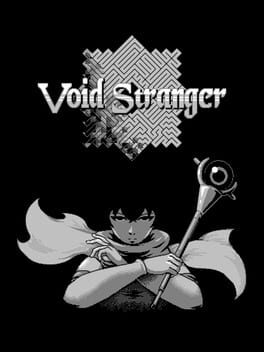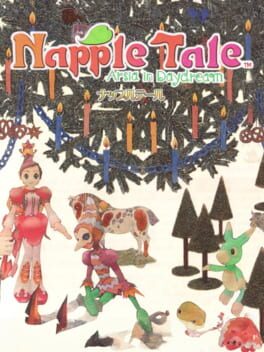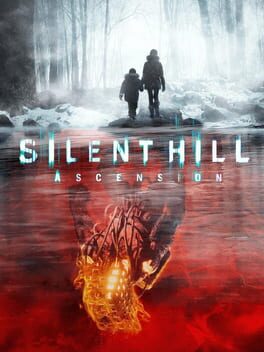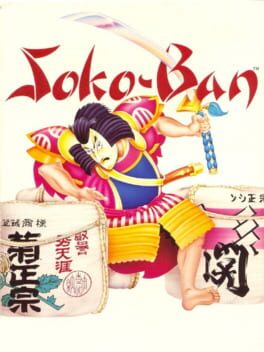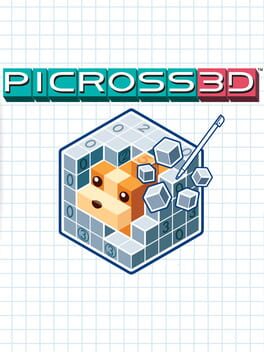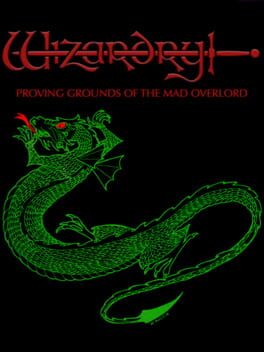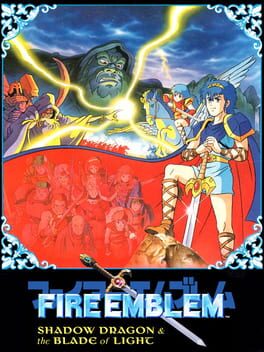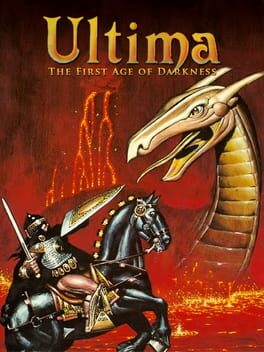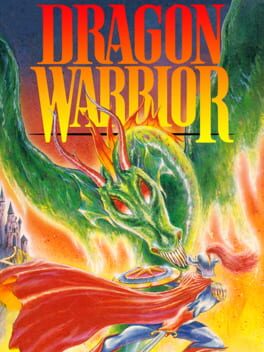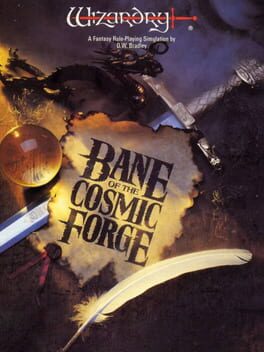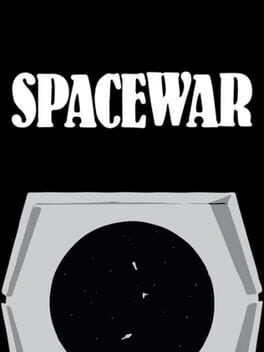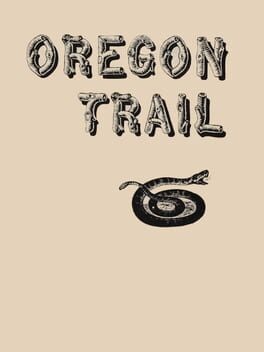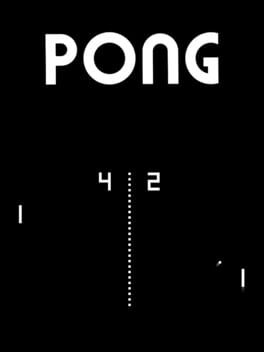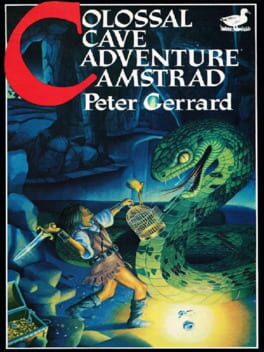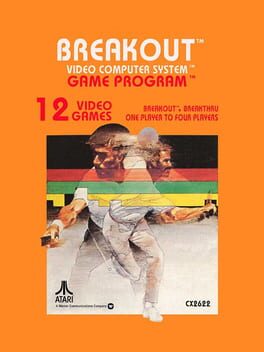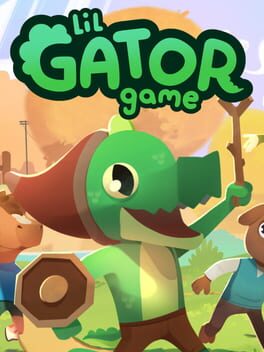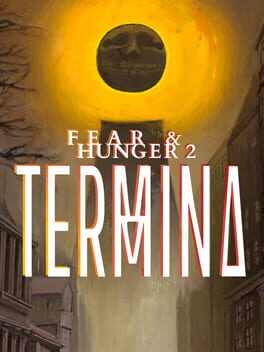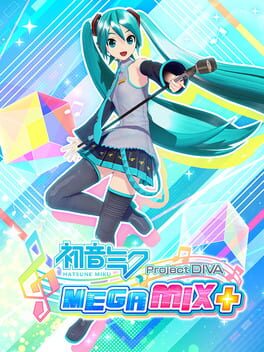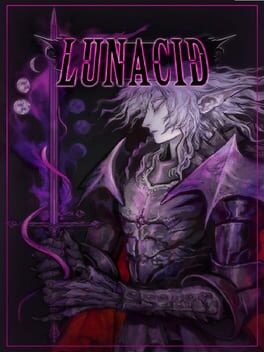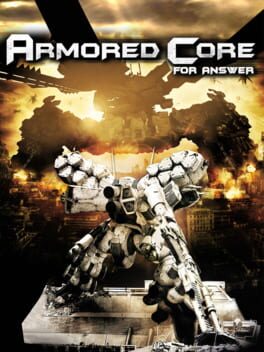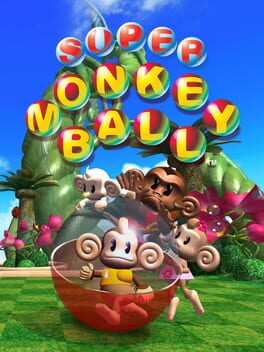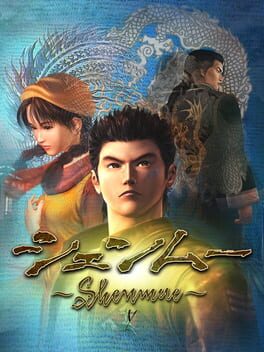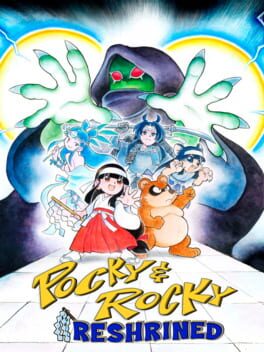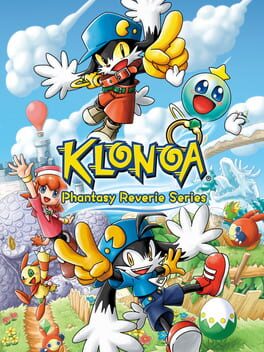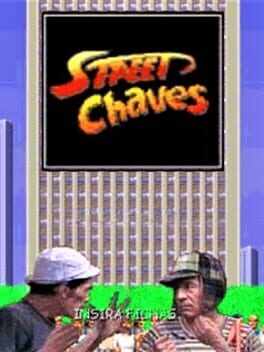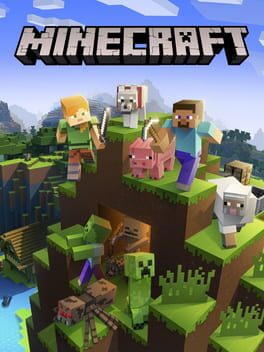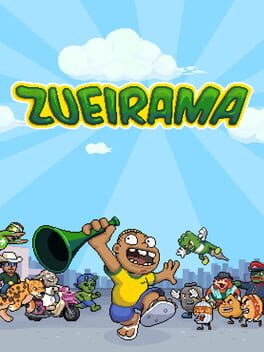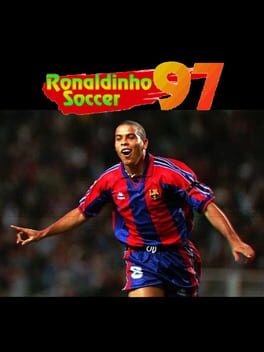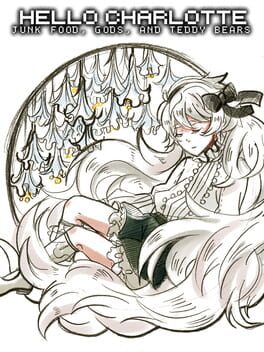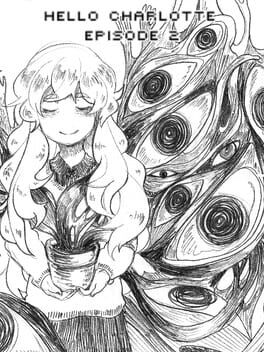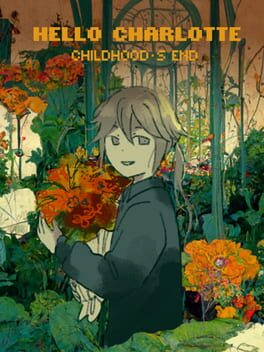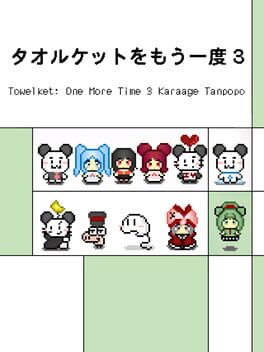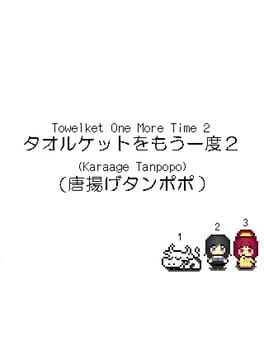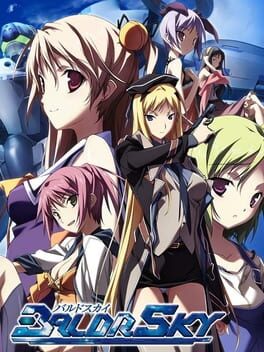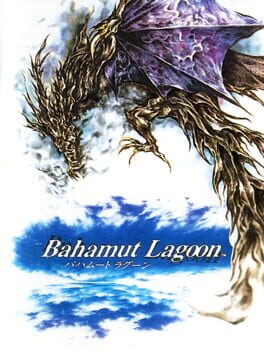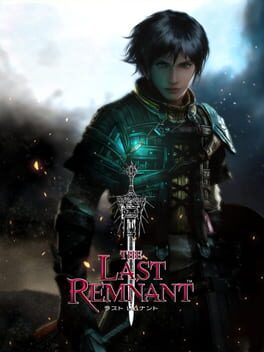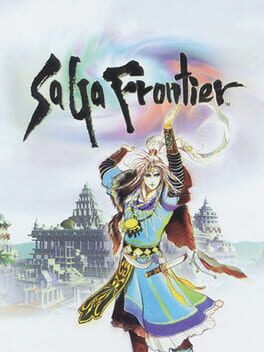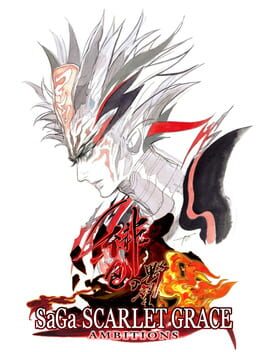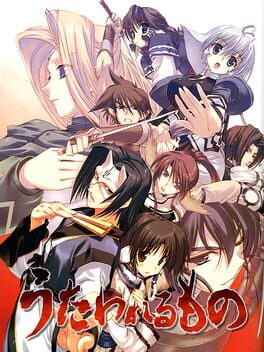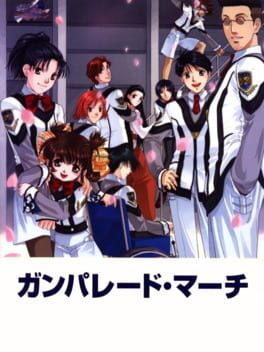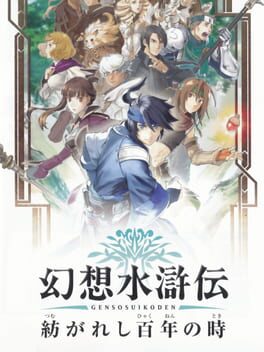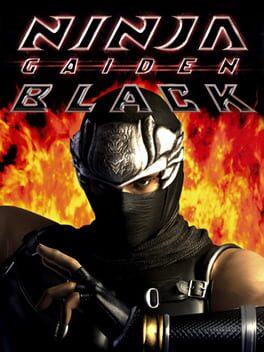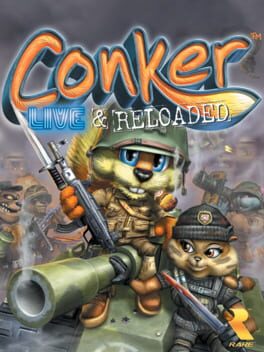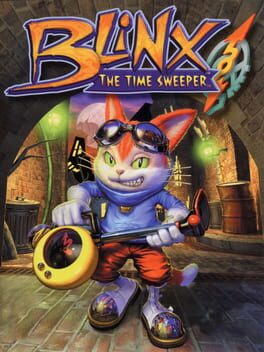FishHotel
195 reviews liked by FishHotel
June 2015. I am 14 years old (that’s right. I’m young!) and reading an article about asexuality. This is the first time I hear about the concept, and I keep thinking about it. A few weeks later I conclude that I am demisexual.
Early 2016. I am 15 years old. I am on my train home, and I let my mind wander. I think about how I am crushing on multiple people. Wasn’t there a word for that? Polyamorous? Maybe I’m that.
Slightly later 2016. Two of my crushes start dating. Awkward. One of them is also polyamorous but the other isn’t so there’s not much to do about this.
April 2nd, 2016. I kiss a boy and I like it. For the rest of the day, I keep thinking about that and conclude that I am pansexual.
July 2016. A friend (and crush) is celebrating her birthday. It is the first time in a while that I spend a significant amount of time with a friend who had until very recently spent half a year in New Zealand. I start crushing on her.
We start dating on October 24th. She is my first girlfriend. She is also asexual so that part of my identity isn’t an issue – until it is a few months later because I feel close enough to her to develop sexual attraction. We make it work though, for a while at least.
She breaks up with me after we’ve been dating for a bit more than a year. I’m not really saddened by this; we continue to be friends and something about this relationship kind of felt off to me anyway.
Early 2018. I am 17 years old. While scrolling through Tumblr I see a post saying “I was such a good male feminist ally that I became a girl… step up fellas”
For some reason I feel the need to reblog it with the addition of “Nah, I’ll remain male. I think. Not 100% sure.” OP reblogs this addition, jokingly calling me a coward.
This sends me down a spiral of self-examination and the next day I decide to try out being a girl. I knew my friends would be progressive regarding this stuff, one of my friends is a trans man and they’re all super nice to him. And indeed, they go along with it. But just two days later I call the whole thing off. It just doesn’t feel quite right.
That evening, I go to a concert and security mistakes me for a girl (I have really long hair) and I feel euphoric about that.
August 2018. I am 18 years old. After thinking about my gender for months without really coming to any conclusion I decide to just come out as unspecified nonbinary (any pronouns) for now.
At some point in 2018 I realize that I am no longer demisexual. Or maybe I never was demisexual. It’s not really that important really.
July 2019. I’m finally done with school and have 3 months before university begins. I spend a month in Japan and spend a lot of time just thinking about stuff while walking around in parks. I come up with the basic idea for a ttrpg system (it ended up not being very fun to play), I start drawing (I never pursued it much further once I was out of Japan again) and most importantly, I finally figure out my gender. It’s a bit tricky to put into words but the most precise way to say it while still being concise is “bigender woman”.
August 2019. I am 19 years old. I meet up with two friends from an online community. They only ever knew me as trans, and they are the first people I interact with in a non-digital space to treat me like a woman. It feels amazing.
Of course, I end up crushing on both which is awkward because they’re monogamous and dating each other.
November 2019. After spending another weekend with the friends I met in August I feel incredibly lonely and install a dating app. I get a few matches, but the conversations never really go anywhere. I feel like nobody on this app knows what they want out of a relationship, myself included.
December 2019. After spending yet another weekend with the aforementioned friends I decide to uninstall the dating app. It’s difficult to explain but I feel like there are some fundamental differences between what I want out of a relationship, what these two have in their relationship, and what I could get out of a relationship from a dating app.
June 9th, 2020. I start dating my current girlfriend. We’re very happy together, despite being long distance. I finally feel like I have everything related to gender and sexuality figured out.
2021. I am 20 years old. I start questioning what exactly the difference between a romantic relationship and a friendship is to me. On July 15th, I conclude that I am aromantic.
There is no real difference between what I feel and felt for the people I’ve been in relationships with and what I feel for close friends. This also explains why I kept crushing on basically all my friends.
I didn’t think about it in the moment but in retrospect I’m very glad that my girlfriend didn’t react badly to this at all. Our relationship can still be special because of the way xie feels about me.
September 7th, 2022. I am 22 years old. I play one night, hot springs. It’s a great game that I can relate to a lot. I plan on playing the sequels eventually, though I’m unsure if they’ll be as relatable.
October 15th, 2022. I play last day of spring and like this one a lot as well.
I then go on to play spring leaves no flowers (wow, 900+ words before the game this review is about is mentioned, this has to be some kind of record). I am blown away.
The mechanic of having crossed out options confuses me at first, but I end up loving it very quickly. Having things you want to say but you don’t feel like you can say is something I assume most people can relate to and the fact that your friends encouraging you can unlock these options is great.
Asexuality and especially aromanticism are things very rarely discussed in media. Even the most progressive of blue-hairs-and-pronouns-media is usually just going to include a character who is ace or aroace and then they might explain that to others but it’s not really about what it feels like to them. This game is a welcome exception, exploring what it’s like to discover you’re aroace while in a romantic relationship.
And yes, I wish there was any representation for people who are are but not ace but I won’t hold that against individual pieces of media
As I am writing this review, I keep thinking “This is stupid, this is way too long, this is way too personal, no one will care, you shouldn’t put stuff this personal out for strangers on the internet, just do a funny two or three sentence review like with the others” but I’m going to publish this anyway. Maybe someone will like it. Maybe someone will play this amazing trilogy because of this. Maybe someone will even learn something about themselves thanks to this.
Discovering a new aspect of your identity can be scary. Especially if you’re currently in a relationship. But with the help of our friends both me and Manami managed to do it.
You can do it too.
Early 2016. I am 15 years old. I am on my train home, and I let my mind wander. I think about how I am crushing on multiple people. Wasn’t there a word for that? Polyamorous? Maybe I’m that.
Slightly later 2016. Two of my crushes start dating. Awkward. One of them is also polyamorous but the other isn’t so there’s not much to do about this.
April 2nd, 2016. I kiss a boy and I like it. For the rest of the day, I keep thinking about that and conclude that I am pansexual.
July 2016. A friend (and crush) is celebrating her birthday. It is the first time in a while that I spend a significant amount of time with a friend who had until very recently spent half a year in New Zealand. I start crushing on her.
We start dating on October 24th. She is my first girlfriend. She is also asexual so that part of my identity isn’t an issue – until it is a few months later because I feel close enough to her to develop sexual attraction. We make it work though, for a while at least.
She breaks up with me after we’ve been dating for a bit more than a year. I’m not really saddened by this; we continue to be friends and something about this relationship kind of felt off to me anyway.
Early 2018. I am 17 years old. While scrolling through Tumblr I see a post saying “I was such a good male feminist ally that I became a girl… step up fellas”
For some reason I feel the need to reblog it with the addition of “Nah, I’ll remain male. I think. Not 100% sure.” OP reblogs this addition, jokingly calling me a coward.
This sends me down a spiral of self-examination and the next day I decide to try out being a girl. I knew my friends would be progressive regarding this stuff, one of my friends is a trans man and they’re all super nice to him. And indeed, they go along with it. But just two days later I call the whole thing off. It just doesn’t feel quite right.
That evening, I go to a concert and security mistakes me for a girl (I have really long hair) and I feel euphoric about that.
August 2018. I am 18 years old. After thinking about my gender for months without really coming to any conclusion I decide to just come out as unspecified nonbinary (any pronouns) for now.
At some point in 2018 I realize that I am no longer demisexual. Or maybe I never was demisexual. It’s not really that important really.
July 2019. I’m finally done with school and have 3 months before university begins. I spend a month in Japan and spend a lot of time just thinking about stuff while walking around in parks. I come up with the basic idea for a ttrpg system (it ended up not being very fun to play), I start drawing (I never pursued it much further once I was out of Japan again) and most importantly, I finally figure out my gender. It’s a bit tricky to put into words but the most precise way to say it while still being concise is “bigender woman”.
August 2019. I am 19 years old. I meet up with two friends from an online community. They only ever knew me as trans, and they are the first people I interact with in a non-digital space to treat me like a woman. It feels amazing.
Of course, I end up crushing on both which is awkward because they’re monogamous and dating each other.
November 2019. After spending another weekend with the friends I met in August I feel incredibly lonely and install a dating app. I get a few matches, but the conversations never really go anywhere. I feel like nobody on this app knows what they want out of a relationship, myself included.
December 2019. After spending yet another weekend with the aforementioned friends I decide to uninstall the dating app. It’s difficult to explain but I feel like there are some fundamental differences between what I want out of a relationship, what these two have in their relationship, and what I could get out of a relationship from a dating app.
June 9th, 2020. I start dating my current girlfriend. We’re very happy together, despite being long distance. I finally feel like I have everything related to gender and sexuality figured out.
2021. I am 20 years old. I start questioning what exactly the difference between a romantic relationship and a friendship is to me. On July 15th, I conclude that I am aromantic.
There is no real difference between what I feel and felt for the people I’ve been in relationships with and what I feel for close friends. This also explains why I kept crushing on basically all my friends.
I didn’t think about it in the moment but in retrospect I’m very glad that my girlfriend didn’t react badly to this at all. Our relationship can still be special because of the way xie feels about me.
September 7th, 2022. I am 22 years old. I play one night, hot springs. It’s a great game that I can relate to a lot. I plan on playing the sequels eventually, though I’m unsure if they’ll be as relatable.
October 15th, 2022. I play last day of spring and like this one a lot as well.
I then go on to play spring leaves no flowers (wow, 900+ words before the game this review is about is mentioned, this has to be some kind of record). I am blown away.
The mechanic of having crossed out options confuses me at first, but I end up loving it very quickly. Having things you want to say but you don’t feel like you can say is something I assume most people can relate to and the fact that your friends encouraging you can unlock these options is great.
Asexuality and especially aromanticism are things very rarely discussed in media. Even the most progressive of blue-hairs-and-pronouns-media is usually just going to include a character who is ace or aroace and then they might explain that to others but it’s not really about what it feels like to them. This game is a welcome exception, exploring what it’s like to discover you’re aroace while in a romantic relationship.
As I am writing this review, I keep thinking “This is stupid, this is way too long, this is way too personal, no one will care, you shouldn’t put stuff this personal out for strangers on the internet, just do a funny two or three sentence review like with the others” but I’m going to publish this anyway. Maybe someone will like it. Maybe someone will play this amazing trilogy because of this. Maybe someone will even learn something about themselves thanks to this.
Discovering a new aspect of your identity can be scary. Especially if you’re currently in a relationship. But with the help of our friends both me and Manami managed to do it.
You can do it too.
Void Stranger
2023
I genuinely hate giving this game a low score, because there's this interesting hook, conceptually speaking, of this lively town where these incredibly diverse cast of townsfolk that have their own personal issues that you resolve does appeal to a certain part of my personal sensibilities. The world draped in this fairly-tale dressing that informs much of the characters and the turmoil they go through that Porch resolves by exploring the world outside. These season-themed levels that Porch goes through are not necessarily traversed to reach the finish line but to explore these worlds and find the root cause of the problem of the characters that inhabit them and how it mirrors the townsfolk in Napple World.
However, there are just a number of little things that just bother me that really hinder my enjoyment of this game, whether it's the Paffet-remixing subsystem, or the unremarkable 2.5D platforming that I genuinely don't see improving beyond the first few levels I had played, or how long it just takes to do much of anything at the beginning.
This is clearly just a Not My Thing issue, thought the rather banal fixed-camera 2.5D platforming is certainly a problem. I can see myself warming up and even giving a higher score to Napple Tale if I decide to pick it up again and progress further. Really understanding the motifs of this game and further understand this fantasy world down-the-rabbit hole that Porch finds herself in. But as I was helping out a school whose piano had broken down, and I was self-aware of my own apathy as I was resolving the problem, I knew it was time to hang up the hat for now.
Also, it can not be understated how amazing Yoko Kanno's contribution to this game is.
However, there are just a number of little things that just bother me that really hinder my enjoyment of this game, whether it's the Paffet-remixing subsystem, or the unremarkable 2.5D platforming that I genuinely don't see improving beyond the first few levels I had played, or how long it just takes to do much of anything at the beginning.
This is clearly just a Not My Thing issue, thought the rather banal fixed-camera 2.5D platforming is certainly a problem. I can see myself warming up and even giving a higher score to Napple Tale if I decide to pick it up again and progress further. Really understanding the motifs of this game and further understand this fantasy world down-the-rabbit hole that Porch finds herself in. But as I was helping out a school whose piano had broken down, and I was self-aware of my own apathy as I was resolving the problem, I knew it was time to hang up the hat for now.
Also, it can not be understated how amazing Yoko Kanno's contribution to this game is.
Yume Nikki
2004
2004.
A year in gaming like no other, where consumers were banqueted an assortment of games, many of which would become some of the best in gaming of all-time. That year, we saw the release of games like Half-Life 2, Halo 2, Metal Gear Solid 3, World of Warcraft, Grand Theft Auto: San Andreas, Counter-Strike: Source, Vampire: The Masquerade - Bloodlines, Knights of the Old Republic 2, Ninja Gaiden, Katamari Damacy and many, many more. More importantly though than that these games were fun, they were innovating. Pushing forward to the future of what games could become. And the game that lead that helped lead this charge and would lay down the foundational bedrock for a scene that would rival AAA studios was Doukutsu Monogatari, or Cave Story. A game that was all created by one developer, Daisuke "Pixel" Amaya.
Amaya's game wasn't groundbreaking by any means. Cave Story isn't an innovative milestone nor is it pushing any boundaries. What Cave Story is was polished, taking influence from games that Pixel enjoyed from his childhood, like Metroid and Castlevania that he references. It was an extraordinary game, with absolutely stellar music, gorgeous pixel art, and very snappy run-and-gun action. Cave Story is cited by many indie developers as the game that got them into development or as influence for their games, and in-turn, the art those developers would create would influence other indie developers in this chain-reaction of inspiration that would see the rise of the indie game industry. It is to note that Cave Story is by no means stand out in what it does, even in its legacy of a game from one developer. There is a long history of fan-made and independent content. It would be more apt-to say that Cave Story laid the foundation for indie developers in terms of its inspiration, much like Cave Story was inspired from others before it.
But Cave Story was not even meant to be special, it was an untranslated shareware game, among others in Japan's own long history of doujin soft, that had been going on way long before Cave Story even came to the picture. Japan's history of indie development goes back just as long as the rest of the world, most of which of which were as a hobby. This scene that was once, and in some cases still is, enclosed off from the rest of the world, would have its own fair share of games that inspired others, have doujin games created based off the works of others out of admiration, like Touhou. In 2004, Cave Story would be released into the public in a limited release alongside another game that would predate it.
Yume Nikki.
Yume Nikki released on the same year as Cave Story on the same site. Much like Cave Story, Yume Nikki was also developed by one person, Kikiyama, who would create the entire game's sound, art, programming, everything. It also saw a very limited release, until fans of the game created an English-translation that would see to this games proliferation across the Internet. And much like Cave Story, it's a game that has had a strong influence on so many people across the independent games scene across the globe and has become the primary inspiration for a lot of their games, with the primary example being Toby Fox's Undertale, which in-turn would also spawn it's own creative legacy with others. But what sets this apart from a lot of its contemporaries, despite also not being the first game to accomplish this, is Yume Nikki itself.
Yume Nikki does not play like anything I've ever seen before, with LSD: Dream Emulator probably being the closest example we have, and yet Yume Nikki is still unique of its kind. Yume Nikki is a game where you're experiencing the dreamscape of your unconscious mind. There are no specific goals, there is no dialogue, there is no direction. There is only experience. Drifting around these multivaried and interconnected areas of your REM sleep reality, all abide by unspoken, archaic rules. Worlds inhabited by all of peculiar creatures, if you can even call them that. Common themes that binds one particular area offset from another with their own entirely different gimmick. These worlds were not meant to be traveled but be explored, not to pass by but to immerse in. These long, often unending segments of your dream stretch out unfathomably long with often repeating objects in varied patterns dispersed widely across the abstract plane. It also seems so repetitious, especially underscored with tracks that last no longer than ten seconds before they loop back.
And yet, that is the point.
The long journey to of discovery of one's own mind, the human tendency to find patterns and symbolism in things that seem incomprehensible to anyone else. To seek meaning in things where their may not even be any and may not matter if it means something to us. These long stretches of pure infinite void to find discovery in things about ourselves and trying to make sense of the chaos that we have no control over, there is a sense of understanding. As you traverse further into the worlds deeper and deeper below the surface, things become more sensible and concrete and another branch far deeper are the things that we don't understand but have a profound effect on us. The further down we go, the more sensible it is and the more terrifying the implications, as the things that make sense are the things that are the reasons why they're pushed so far below in the dark depths of Madotsuki's mind, likely distorted memories of things that should never be resurfaced. Memories of key moments in her life that we do not wish to ever see. While Yume Nikki is quite abstract it is not without some obvious themes and common interpretations found from the clues you find plummeting down the rabbit void. A sense of identity, trauma, and death are very common imagery found throughout the game and lots of theories that the community have surgically went over the game. For me, I ignored all of those because they're not relevant to what I want to take away from this personally and feel like using things as guides and theories would get in the way of the intended idea of directionless roaming around without any sense of guidance or preconceptions.
If there's any one goal the game might have it's collecting these Effects that will transform Madotsuki into various forms with some power. All of which have very little-to-no use and almost none needed to "progress" in the game. But what they do have is consequence. The unpredictable events that it can bring to the inhabitants of your mind, and in doing so, discover a little more (or less) about ourselves. I used an Effect to transform myself into a traffic light and interacted with one inhabitant, in a place fathoms below the surface of our dream, who are one of the few people who actually resembles something like a human in a landscape where everything looks distorted and crude. What I got was a complete surprise and something I never would have expected from a game that thrives off unpredictability and the strange at the very beginning.
Even as I completed the game and remained stunned at the ending of a game I already knew years in advance would happen, the first thing I did was boot it back up again and kept going. Yume Nikki has this wonderful sense of atmosphere that I kept finding myself going back to even after its completion, because it wasn't complete. There was more to see and discover and more to know about what this game is. To retread familiar grounds and journeying through tonally whiplashed zones, both visually and through its sound. It's hard to really nail down what this game is trying to go for or to explain the hook of what makes this game. In fact, conceptually it sounds extremely boring. There are no puzzles, nor action, exploring the worlds sounds repetitive, there's no story. And yet, for many, it's their favorite game of all time and has saw almost as much popularity over Cave Story.
It has found its own niche audience that has grown in popularity. Many fan games were created that were almost as good, if not just as good, as Yume Nikki. And while it's not a big foundation starter for a global industry kickstarter like Cave Story, it would help lay the cement and provide further inspiration to younger developers to create things of their own: things that were more profound, thought provoking, creative, or just downright silly and strange. That's what's fascinating about doujin soft games is that they didn't care much about making games that fit some niche but to fit the things themselves they would want to put out. Born from that were some incredible titles of ingenuity, while of course among the piles of rather mediocre titles. Regardless though, all made out of some love or passion from what the things that influenced them that would be discovered by others to translate these games to be shared worldwide and influence other generations of artists to create something of themselves. Yume Nikki while has its influences that clearly inspired it, like Mother 1, it doesn't behold to any conventions or adhere to any standard industry practices. It's just whatever Kikiyama wanted to make, no strings attached.
2004 was a good year.
And Yume Nikki is an art like nothing else.
A year in gaming like no other, where consumers were banqueted an assortment of games, many of which would become some of the best in gaming of all-time. That year, we saw the release of games like Half-Life 2, Halo 2, Metal Gear Solid 3, World of Warcraft, Grand Theft Auto: San Andreas, Counter-Strike: Source, Vampire: The Masquerade - Bloodlines, Knights of the Old Republic 2, Ninja Gaiden, Katamari Damacy and many, many more. More importantly though than that these games were fun, they were innovating. Pushing forward to the future of what games could become. And the game that lead that helped lead this charge and would lay down the foundational bedrock for a scene that would rival AAA studios was Doukutsu Monogatari, or Cave Story. A game that was all created by one developer, Daisuke "Pixel" Amaya.
Amaya's game wasn't groundbreaking by any means. Cave Story isn't an innovative milestone nor is it pushing any boundaries. What Cave Story is was polished, taking influence from games that Pixel enjoyed from his childhood, like Metroid and Castlevania that he references. It was an extraordinary game, with absolutely stellar music, gorgeous pixel art, and very snappy run-and-gun action. Cave Story is cited by many indie developers as the game that got them into development or as influence for their games, and in-turn, the art those developers would create would influence other indie developers in this chain-reaction of inspiration that would see the rise of the indie game industry. It is to note that Cave Story is by no means stand out in what it does, even in its legacy of a game from one developer. There is a long history of fan-made and independent content. It would be more apt-to say that Cave Story laid the foundation for indie developers in terms of its inspiration, much like Cave Story was inspired from others before it.
But Cave Story was not even meant to be special, it was an untranslated shareware game, among others in Japan's own long history of doujin soft, that had been going on way long before Cave Story even came to the picture. Japan's history of indie development goes back just as long as the rest of the world, most of which of which were as a hobby. This scene that was once, and in some cases still is, enclosed off from the rest of the world, would have its own fair share of games that inspired others, have doujin games created based off the works of others out of admiration, like Touhou. In 2004, Cave Story would be released into the public in a limited release alongside another game that would predate it.
Yume Nikki.
Yume Nikki released on the same year as Cave Story on the same site. Much like Cave Story, Yume Nikki was also developed by one person, Kikiyama, who would create the entire game's sound, art, programming, everything. It also saw a very limited release, until fans of the game created an English-translation that would see to this games proliferation across the Internet. And much like Cave Story, it's a game that has had a strong influence on so many people across the independent games scene across the globe and has become the primary inspiration for a lot of their games, with the primary example being Toby Fox's Undertale, which in-turn would also spawn it's own creative legacy with others. But what sets this apart from a lot of its contemporaries, despite also not being the first game to accomplish this, is Yume Nikki itself.
Yume Nikki does not play like anything I've ever seen before, with LSD: Dream Emulator probably being the closest example we have, and yet Yume Nikki is still unique of its kind. Yume Nikki is a game where you're experiencing the dreamscape of your unconscious mind. There are no specific goals, there is no dialogue, there is no direction. There is only experience. Drifting around these multivaried and interconnected areas of your REM sleep reality, all abide by unspoken, archaic rules. Worlds inhabited by all of peculiar creatures, if you can even call them that. Common themes that binds one particular area offset from another with their own entirely different gimmick. These worlds were not meant to be traveled but be explored, not to pass by but to immerse in. These long, often unending segments of your dream stretch out unfathomably long with often repeating objects in varied patterns dispersed widely across the abstract plane. It also seems so repetitious, especially underscored with tracks that last no longer than ten seconds before they loop back.
And yet, that is the point.
The long journey to of discovery of one's own mind, the human tendency to find patterns and symbolism in things that seem incomprehensible to anyone else. To seek meaning in things where their may not even be any and may not matter if it means something to us. These long stretches of pure infinite void to find discovery in things about ourselves and trying to make sense of the chaos that we have no control over, there is a sense of understanding. As you traverse further into the worlds deeper and deeper below the surface, things become more sensible and concrete and another branch far deeper are the things that we don't understand but have a profound effect on us. The further down we go, the more sensible it is and the more terrifying the implications, as the things that make sense are the things that are the reasons why they're pushed so far below in the dark depths of Madotsuki's mind, likely distorted memories of things that should never be resurfaced. Memories of key moments in her life that we do not wish to ever see. While Yume Nikki is quite abstract it is not without some obvious themes and common interpretations found from the clues you find plummeting down the rabbit void. A sense of identity, trauma, and death are very common imagery found throughout the game and lots of theories that the community have surgically went over the game. For me, I ignored all of those because they're not relevant to what I want to take away from this personally and feel like using things as guides and theories would get in the way of the intended idea of directionless roaming around without any sense of guidance or preconceptions.
If there's any one goal the game might have it's collecting these Effects that will transform Madotsuki into various forms with some power. All of which have very little-to-no use and almost none needed to "progress" in the game. But what they do have is consequence. The unpredictable events that it can bring to the inhabitants of your mind, and in doing so, discover a little more (or less) about ourselves. I used an Effect to transform myself into a traffic light and interacted with one inhabitant, in a place fathoms below the surface of our dream, who are one of the few people who actually resembles something like a human in a landscape where everything looks distorted and crude. What I got was a complete surprise and something I never would have expected from a game that thrives off unpredictability and the strange at the very beginning.
Even as I completed the game and remained stunned at the ending of a game I already knew years in advance would happen, the first thing I did was boot it back up again and kept going. Yume Nikki has this wonderful sense of atmosphere that I kept finding myself going back to even after its completion, because it wasn't complete. There was more to see and discover and more to know about what this game is. To retread familiar grounds and journeying through tonally whiplashed zones, both visually and through its sound. It's hard to really nail down what this game is trying to go for or to explain the hook of what makes this game. In fact, conceptually it sounds extremely boring. There are no puzzles, nor action, exploring the worlds sounds repetitive, there's no story. And yet, for many, it's their favorite game of all time and has saw almost as much popularity over Cave Story.
It has found its own niche audience that has grown in popularity. Many fan games were created that were almost as good, if not just as good, as Yume Nikki. And while it's not a big foundation starter for a global industry kickstarter like Cave Story, it would help lay the cement and provide further inspiration to younger developers to create things of their own: things that were more profound, thought provoking, creative, or just downright silly and strange. That's what's fascinating about doujin soft games is that they didn't care much about making games that fit some niche but to fit the things themselves they would want to put out. Born from that were some incredible titles of ingenuity, while of course among the piles of rather mediocre titles. Regardless though, all made out of some love or passion from what the things that influenced them that would be discovered by others to translate these games to be shared worldwide and influence other generations of artists to create something of themselves. Yume Nikki while has its influences that clearly inspired it, like Mother 1, it doesn't behold to any conventions or adhere to any standard industry practices. It's just whatever Kikiyama wanted to make, no strings attached.
2004 was a good year.
And Yume Nikki is an art like nothing else.
Free superchats on sign up means you can blast "wearing my james sunderland c o c k ring" on screen and change the canon of Silent Hill.
Spending real money to vote on what cutscenes you want to watch already sounds like a terrible premise for a 'game,' but adding a battle pass to a Silent Hill product with fun stickers that say things like "IT'S TRAUMA!" and khaki's for your loser Silent Hill OC are proof positive that Konami hasn't changed and nobody with any direct influence over the IP knows what the hell to do with it. At least Jacob Navok, CEO of developer Genvid, shows up at the end of each episode to die a little more in front of the cameras. Everyone keeps voting for the options Jacob doesn't want, and it's all the result of some cabal of bad actors that apparently nobody could've accounted for or put functional moderation in place to curb. Watch as a flawed man withers away, night after night, trapped in a nightmare and punished for his deeds.
Jacob would like you to believe that the monetization is intended for you to save time, and is useful more to bypass puzzles than rock the vote. I guess that's a fair point, I mean these puzzles have to be designed bad on purpose, that's how you monetize them! Eurogamer's article about Ascension's economy is a great read, just let all these numbers and stats wash over you and remind yourself it's all for a Silent Hill game.
Oh well, at least we have a Bloober Team remake of Silent Hill 2 to look forward to...
Spending real money to vote on what cutscenes you want to watch already sounds like a terrible premise for a 'game,' but adding a battle pass to a Silent Hill product with fun stickers that say things like "IT'S TRAUMA!" and khaki's for your loser Silent Hill OC are proof positive that Konami hasn't changed and nobody with any direct influence over the IP knows what the hell to do with it. At least Jacob Navok, CEO of developer Genvid, shows up at the end of each episode to die a little more in front of the cameras. Everyone keeps voting for the options Jacob doesn't want, and it's all the result of some cabal of bad actors that apparently nobody could've accounted for or put functional moderation in place to curb. Watch as a flawed man withers away, night after night, trapped in a nightmare and punished for his deeds.
Jacob would like you to believe that the monetization is intended for you to save time, and is useful more to bypass puzzles than rock the vote. I guess that's a fair point, I mean these puzzles have to be designed bad on purpose, that's how you monetize them! Eurogamer's article about Ascension's economy is a great read, just let all these numbers and stats wash over you and remind yourself it's all for a Silent Hill game.
Oh well, at least we have a Bloober Team remake of Silent Hill 2 to look forward to...
Void Stranger
2023
A neat and multi-layered experience that does a fun spin on the sokobon puzzle form! the mysteries are of the cryptic mechanics and multiple unclear endings variety), but the meat of the game is solving grid-based sokobon-esque puzzles that have a bit of overlap with gameboy adventure stuff, note-taking on things that might be clues, and testing out ideas.
Soko-Ban
1982
It's the laborer's code, an allegiance to classist logic hiding behind the veneer of a machine. Who's to say you can't pull these blocks other than the rules of the game? These walls and obstacles entrap you, make you feel the claustrophobia that comes with poverty and exploitation. Surrounding these microscopic tasks are naught but void—just the fraught acceptance of capitalism's encompassing reality. Here's a gallery of A-to-Z state machines one yearns to find freedom from, yet masks the possibilities of other, better worlds beyond the transactional paradigm. A purgatory wrapped in darkness, and the only clear way forward is toiling under this system for eternity.
Even then, the original Sokoban is more than it seems. One of the final puzzles tasks you with moving blocks in a seemingly impossible way. That is, until you accidentally push through a wall, destroying a piece of it which lets you finally manipulate the block stack without failure. All future official versions of the 1982 classic would ditch this element. After all, it sounds frustrating to need to discover or know this completely un-telegraphed mechanic, doesn't it? Kind of like how your boss refuses to explain the finer details of your job, or even how to complete a seemingly simple yet elusive task? I can only imagine how the warehouse keeper must feel, hopelessly exhausting every possibility except the most absurd, contradictory one that never worked before. And it doesn't feel like an accomplishment, or a stroke of genius. You either know because someone finally told you, or you accidentally fell into success instead.
Hiroyuki Imabayashi was a retail clerk at the time he got his first computer, a Sharp MZ borrowed from a friend. The games he subsequently played on his later PC-8001 and PC-88 units, as well as an imported Apple II, inspired him to make a little game of his own, reflecting what he saw in his environment. What possessed a well-read, movie-loving record store salesman to make one of the great early pro-labor digital puzzlers? I'd like to ask him myself, though I suspect he'll answer with something like "I never thought about it that deeply". We're all so ingrained in this system of the world that we can feel its pressure and imposition as we grow ("coming of age" indeed), even if we can't always articulate that sensation. Sokoban, with all its elementary yet convoluted mind-twisters, inspires what must have seemed like a revolution in video games as introspection.
It's no surprise to me that Imabayashi soon spent way more time writing and designing graphic text adventures, most often the kinds of pulpy mysteries he grew up with. He still relies on the perennial success of Sokoban's design concept for his livelihood, but in doing so has found time and space in life to just be. What he'd created from a working man's understanding of his favorite childhood card games had forever altered game design for a post-modern era. How does one surpass that? So he moved laterally, handing the reigns of commercial ambition to others at the studio he started in Takarazuka. And Thinking Rabbit certainly did experiment, yet the founder and his co-workers now work for Falcon Co., having sold their company and IPs to a former contractor following the Japan's economic and investment stagnation in the '90s. What keeps them going is, of course, a certain block-pushing Ship of Theseus most often starring some wide-eyed young man trying to buy a car or woo his love, among other bootstraps window dressing.
While Imabayashi's adventure games gained a notable following for years to come, his debut game has long since evolved beyond what he'd been able to match. Why work to reinvent that which will forever morph to other designers' wills, or just slot into myriads of other frameworks as shown by creations like Baba is You? Yet for all the appreciation Imabayashi's earned for his post-Sokoban legacy, the software which freed him has ironically trapped his image in amber. Block puzzles in video games are just too useful and universal—so the death of the author continues. I can go on my mobile app storefront of choice and find a seemingly endless number of Sokoban clones, many from first-time developers learning to code games. There's a whole cottage industry of bedroom coders building off what this once fanciful PC-8801 experiment started. And he knows all too well what it's done for him and shackled him to in the process.
I suppose this florid look at a generally self-explanatory media artifact isn't helping much. Then again, my lack of Japanese language skills makes it hard to dig into Thinking Rabbit's adventures without duress. Sokoban has become a staple of gaming across the world, spanning ages before and after its origins. We're as familiar with its principles, iterations, and insinuations as we are with backgammon or chess! And just as those pastimes silently teach lessons and etiquette pertaining to the social-economic structures birthing them, Sokoban too reflects its environment. This game ran on everything, in even more forms than Doom. It arguably had a predecessor in Nob Yoshigahara's Rush Hour puzzle, and even the lowliest of early digital handhelds like Epoch's Game Pocket Computer featured the block pusher. Ubiquity both made and destroyed Sokoban as an essential distillation of logic challenges previously fragmented across many arcade, computer, and board games the world over.
Takurazuka's greatest software creation gave players the illusion of control over time-space puzzles previously meant to eat quarters in game centers. It transferred the traditions of puzzle boxes and transfixing toys into binary. And from this black box of restrictions, revelations, and repetition comes the final realization: Sokoban invokes a wager of faith for or against capitalist reality. Those who succeed in unraveling or merely memorizing these menial tasks can feel at least a little vindicated. Those who fail will quickly realize the futility and fruitlessness of labor you give but can never keep, even if they eventually succeed under the circumstances. Everyone who's ever complained about "unfun" box pushing in a Zelda game could relate to this. All those who criticized and/or continue to lambast the likes of Papers, Please should consider the power of games as simple as this to provoke praxis in this festering world.
Maybe the most actionable thoughts Sokoban leads to now are playing a different, more fun and accessible game. We're so accustomed to what this PC-88 classic offers, and binds us to, that it's nothing worth investing time in. In this sense, Imabayashi's folly has become the kind of effortless un-game or anti-game others try too hard to sell us on. There's nothing glamorous, fantastic, or conventionally laudable about pure, unadorned Sokoban. It's too good at what it does, meaning its spiritual successors must imagine more creative, more engrossing variations on its themes. Hell, the whole idea of Baba is You can basically boil down to "what if we challenged the player to make a new Sokoban game in every single level?". Sokoban transcended its mere game-ness long ago; today it's both a platform and a bad example to follow. More than most "classic" games, this one has morphed into an idol of ludological dreams, nightmares, and ambitions subservient to the possible. Sisyphus would be proud.
For all the ramblings and minutiae I could go on about, I think you should try the original Sokoban and come to your own conclusions. The PC-88 game and its ports certainly show their age, but also how timeless they remain. Without factoring all of what Sokoban was, is, and will be into any discussion of Japanese PC software and beyond, any history of puzzle genres and tropes will be incomplete. Thank you for coming to my TED talk.
Even then, the original Sokoban is more than it seems. One of the final puzzles tasks you with moving blocks in a seemingly impossible way. That is, until you accidentally push through a wall, destroying a piece of it which lets you finally manipulate the block stack without failure. All future official versions of the 1982 classic would ditch this element. After all, it sounds frustrating to need to discover or know this completely un-telegraphed mechanic, doesn't it? Kind of like how your boss refuses to explain the finer details of your job, or even how to complete a seemingly simple yet elusive task? I can only imagine how the warehouse keeper must feel, hopelessly exhausting every possibility except the most absurd, contradictory one that never worked before. And it doesn't feel like an accomplishment, or a stroke of genius. You either know because someone finally told you, or you accidentally fell into success instead.
Hiroyuki Imabayashi was a retail clerk at the time he got his first computer, a Sharp MZ borrowed from a friend. The games he subsequently played on his later PC-8001 and PC-88 units, as well as an imported Apple II, inspired him to make a little game of his own, reflecting what he saw in his environment. What possessed a well-read, movie-loving record store salesman to make one of the great early pro-labor digital puzzlers? I'd like to ask him myself, though I suspect he'll answer with something like "I never thought about it that deeply". We're all so ingrained in this system of the world that we can feel its pressure and imposition as we grow ("coming of age" indeed), even if we can't always articulate that sensation. Sokoban, with all its elementary yet convoluted mind-twisters, inspires what must have seemed like a revolution in video games as introspection.
It's no surprise to me that Imabayashi soon spent way more time writing and designing graphic text adventures, most often the kinds of pulpy mysteries he grew up with. He still relies on the perennial success of Sokoban's design concept for his livelihood, but in doing so has found time and space in life to just be. What he'd created from a working man's understanding of his favorite childhood card games had forever altered game design for a post-modern era. How does one surpass that? So he moved laterally, handing the reigns of commercial ambition to others at the studio he started in Takarazuka. And Thinking Rabbit certainly did experiment, yet the founder and his co-workers now work for Falcon Co., having sold their company and IPs to a former contractor following the Japan's economic and investment stagnation in the '90s. What keeps them going is, of course, a certain block-pushing Ship of Theseus most often starring some wide-eyed young man trying to buy a car or woo his love, among other bootstraps window dressing.
While Imabayashi's adventure games gained a notable following for years to come, his debut game has long since evolved beyond what he'd been able to match. Why work to reinvent that which will forever morph to other designers' wills, or just slot into myriads of other frameworks as shown by creations like Baba is You? Yet for all the appreciation Imabayashi's earned for his post-Sokoban legacy, the software which freed him has ironically trapped his image in amber. Block puzzles in video games are just too useful and universal—so the death of the author continues. I can go on my mobile app storefront of choice and find a seemingly endless number of Sokoban clones, many from first-time developers learning to code games. There's a whole cottage industry of bedroom coders building off what this once fanciful PC-8801 experiment started. And he knows all too well what it's done for him and shackled him to in the process.
I suppose this florid look at a generally self-explanatory media artifact isn't helping much. Then again, my lack of Japanese language skills makes it hard to dig into Thinking Rabbit's adventures without duress. Sokoban has become a staple of gaming across the world, spanning ages before and after its origins. We're as familiar with its principles, iterations, and insinuations as we are with backgammon or chess! And just as those pastimes silently teach lessons and etiquette pertaining to the social-economic structures birthing them, Sokoban too reflects its environment. This game ran on everything, in even more forms than Doom. It arguably had a predecessor in Nob Yoshigahara's Rush Hour puzzle, and even the lowliest of early digital handhelds like Epoch's Game Pocket Computer featured the block pusher. Ubiquity both made and destroyed Sokoban as an essential distillation of logic challenges previously fragmented across many arcade, computer, and board games the world over.
Takurazuka's greatest software creation gave players the illusion of control over time-space puzzles previously meant to eat quarters in game centers. It transferred the traditions of puzzle boxes and transfixing toys into binary. And from this black box of restrictions, revelations, and repetition comes the final realization: Sokoban invokes a wager of faith for or against capitalist reality. Those who succeed in unraveling or merely memorizing these menial tasks can feel at least a little vindicated. Those who fail will quickly realize the futility and fruitlessness of labor you give but can never keep, even if they eventually succeed under the circumstances. Everyone who's ever complained about "unfun" box pushing in a Zelda game could relate to this. All those who criticized and/or continue to lambast the likes of Papers, Please should consider the power of games as simple as this to provoke praxis in this festering world.
Maybe the most actionable thoughts Sokoban leads to now are playing a different, more fun and accessible game. We're so accustomed to what this PC-88 classic offers, and binds us to, that it's nothing worth investing time in. In this sense, Imabayashi's folly has become the kind of effortless un-game or anti-game others try too hard to sell us on. There's nothing glamorous, fantastic, or conventionally laudable about pure, unadorned Sokoban. It's too good at what it does, meaning its spiritual successors must imagine more creative, more engrossing variations on its themes. Hell, the whole idea of Baba is You can basically boil down to "what if we challenged the player to make a new Sokoban game in every single level?". Sokoban transcended its mere game-ness long ago; today it's both a platform and a bad example to follow. More than most "classic" games, this one has morphed into an idol of ludological dreams, nightmares, and ambitions subservient to the possible. Sisyphus would be proud.
For all the ramblings and minutiae I could go on about, I think you should try the original Sokoban and come to your own conclusions. The PC-88 game and its ports certainly show their age, but also how timeless they remain. Without factoring all of what Sokoban was, is, and will be into any discussion of Japanese PC software and beyond, any history of puzzle genres and tropes will be incomplete. Thank you for coming to my TED talk.
Picross 3D
2009
Pikmin 4
2023
Pikmin 4 is fine.
It isn’t often that I get actively excited for video game releases, considering that my “backlog” of games is at the time of my writing this sitting at well over two thousand games I could try out at any time. I’m in no rush to play the newest stuff that comes out when I haven’t even finished Bloodborne, Mother 3, or even started Disco Elysium yet. I was actually excited for Pikmin 4 though. I preordered it and everything. I don’t even buy games usually, but this one I wanted to dedicate time to right away. Pikmin is one of my favorite game series ever. It’s a little rough around the edges, but I consider Pikmin 2 to be one of my favorite video games of all time. Pikmin 4 is fun. Good, even. But for me, it doesn’t touch Pikmin 2.
Pikmin 4 actually makes me feel the way that I’ve seen some diehard Pikmin 1 fans talk about Pikmin 2, with its lack of any sense of real pressure and focus on free exploration. On one hand, I agree that it takes away from the uniquely isolating, anxious, and unfamiliar mood carefully crafted for the first entry. On the other hand, Pikmin 2 was my first Pikmin game and I greatly valued the lack of pressure that allowed me to learn the ins and outs of it when I was an overly-cautious child. I’m pretty sure it took me 60 days or something the first time I finished it, and now that I’m an adult I can fairly consistently clear it in a couple of in-game weeks. I originally raised an eyebrow when first reading the question of “why bother with the day-night cycle at all if there’s no limit of days” regarding 2, but now I feel myself asking the exact same question with 4.
The actual answer is to create a stronger atmosphere and sense of environment, which Pikmin 4 nails (for the most part). The fact that you need to plan out your day and get work done during daylight, lest you face the wrath of wild night creatures, does wonders for building this sense of mystery and fear about the world you’re exploring. But this connects directly to what I feel to be the single biggest issue with the game: a profound failure of tension building or real danger. What we have here is an incredibly beautiful and vast landscape full of wonder and beauty set in front of us, begging to be explored after ten years of waiting for a new Pikmin game, full of treasures, caves, and enemies recognizable from the first three games.
And this dopey yellow shithead and his crew cheapen the entire experience.
Also the night missions are stupid and dumb contextually because they break the Pikmin story rule about nighttime being too dangerous to explore and ruin immersion by being actually pretty reasonable to handle. The game mode itself is fun enough though, Pikmin Tower Defense is a nice idea. I have nothing else to say about that.
Back to the dog.
With the introduction of the rescue pup Oatchi, levels are now designed with his abilities in-mind, like jumping, traveling through tunnels, and being able to carry Pikmin on his back while traversing through water, an obstacle previously reserved to blue Pikmin exclusively. He also doubles as a second captain who can command and lead Pikmin, just like the player character. You’re given the option (repeatedly encouraged) to give your pup various upgrades to make him stronger, whether it be to deal more damage, carry heavier objects, swim faster, etc., which obviously makes the game easier. However, riding on Oatchi’s back with your Pikmin entirely removes a key weakness of your ant-carrot army of the previous games:
Your hurtbox has now been concentrated to the back of a responsive and easily-maneuverable puppy dog.
I’m torn on this mechanically. On one hand, by the nature of all of your Pikmin being focused on a single spot, you now risk losing a greater number of Pikmin at once to single strikes. I know this because a boss creature stepped on me and Oatchi and I lost most of my troops. No, I don’t want to talk about it.
On the other hand, due to the way Oatchi’s tackle ability works, taking down most of the larger, higher-health enemies is now a linear experience. You hop on Oatchi’s back with your Pikmin, you charge your tackle, you land the tackle, your Pikmin hop off of Oatchi and onto the enemy, the enemy’s health depletes almost instantly.
A game doesn’t have to conform to the rules of any particular genre, but taking an engaging element of strategy out of a “Real-Time Strategy” game rubs me the wrong way.
I don’t actually hate the Oatchi-specific puzzles that come up on occasion. I like the little fella’s design. I think he’s goofy, especially when he makes the little whwhwhwhwhwhw noise with his whistle. But my problems with him get emphasized specifically in the context of the Engulfed Castle.
The Engulfed Castle is, in short, an excellent reference to the Submerged Castle from Pikmin 2, what I feel to be the most memorable and interesting cave in that game. It’s the only cave with a distinct restriction on the type of Pikmin you’re allowed to bring with you, as it is completely surrounded by water. A rule of Pikmin 2 is that you’re only able to enter a cave with the Pikmin directly in your squad, which means you can only bring blue Pikmin into this cave. The Engulfed Castle of Pikmin 4 is surrounded by water as well, but Pikmin 4 does not have this restriction on caves, so Nintendo decided to circumvent this by simply not allowing you to bring any other Pikmin type into the cave when selecting which Pikmin to join you. This cave functions just like any other, with long dark passages for you to explore and collect treasure, except your squad doesn’t have resistance to hazardous elements like fire, poison, and electricity. This means that you need to tread carefully in navigating obstacles to defeat enemies and get to the treasure. However, after about 5 minutes have passed on a sublevel, this steamroller-lookin’-guy shows up and starts meandering around the place, squishing everything in its way. Your blue Pikmin cannot hurt it.
The danger of the Waterwraith comes from the task of needing to carefully bring treasure back to your base coupled with how large, slow, and vulnerable your army is when spread out.
Oatchi lets your squad avoid the Waterwraith completely by carrying you and your Pikmin on its back.
You can just walk right past it. What’s it going to do? Turn slightly to the right? I’m already at the exit with all the treasure collected, you Flubber-lookin’ freak.
In Oatchi’s defense, it’s not entirely his fault. Nintendo also made Pikmin faster, so there’s not really any risk of them being left behind if you call them with your whistle (which is also the best it’s ever been) and try to make a break for it.
I will give Nintendo credit though, because they replicated the layout of the original sublevel floors from Pikmin 2. That was a very cool thing to realize while I was comfortably walking away from the steamroller.
Additionally, Pikmin 4 is so extraordinarily liberal in the sheer number of resources it gives you that I actively stopped giving a shit about Pikmin deaths. This is coming from someone who would hit restart on my GameCube every time a Pikmin died on my first playthrough of Pikmin 2. I’m sitting here with unused bombs, electricity, mines, and 56 Ultra-Spicy Sprays that I don’t even remember getting, and the game has the audacity to remind me that I can always rewind the clock if I feel bad about losing a single Pikmin. Relax, game. I have 400 other ice Pikmin sitting in reserve. It’s gonna be fine.
Granted, Pikmin 3 offered this via day-selection, but it wasn’t in-your-face about it the way in which 4 does it.
I don’t think a game being easier is necessarily a bad thing, but it feels a little wack to me when it’s a Pikmin game specifically, especially the way it was done with this one. I don’t need a bunch of items to figure out how to clear a level. My amorphous controllable blob of little guys can handle this.
Now, I need to address the Rescue Corp. itself. I don’t mind a world of characters that talk and have personalities. Hell, EarthBound is my favorite video game ever because of exactly this. However, what I do mind is a world that doesn’t know how to shut the fuck up.
These characters do not allow for any sense of mystery or wonder while it happens to you, the player, directly. “It sure is good we have the Pikmin with us!” No shit, we’re like three inches tall. You don’t need to have a message pop up that says “wow golly gosh gee you sure just lost 30 Pikmin to a rock-spider death explosion, it sure would be great to rewind time right about now” because you’re fucking experiencing it right there right in front of you. You’re having fun and making video game memories, and Collin or Shepherd has the audacity to say “this thing is happening and you need to do this right now immediately” like I didn’t learn to blow the whistle when my Pikmin were on fire FIFTEEN YEARS AGO.
Why is the game backseat-gaming? Give me the fucking wheel and let me experience the consequences of my actions. For fuck’s sake.
It can be helpful on extremely rare occasions to have some kind of popup notification about something happening off-screen, given the nature of an RTS game, especially for new players. But as someone who figured out fairly quickly to actively pay attention to and notice the only numbers on your screen available at all times worth monitoring (Pikmin population), being told that my squad I sent on a faraway mission is under attack actively spoils the surprise. With Nintendo offering no option to reduce the frequency or turn it off completely, they might as well just said “fuck you” to me personally instead.
The only surprise to be found here is in my own consistent expectations of Nintendo.
Speaking of lacking any sense of mystery and wonder, a mechanic I was surprisingly very excited for in this entry was actually a limitation; you are only allowed to have three types of Pikmin out on the field or in a cave at any given time. This had the potential to be cool in-concept, because it could have meant you’d need to pick and choose different Pikmin types for different needs throughout various obstacles you encounter throughout your time spent in different huge locations.
Nope. The game YET AGAIN removes any player responsibility for decision-making. Just press the X button. The game will give you recommended types. You’ll be fine. No thoughts required. Go grab yourself a snack.
Can’t quite hit that one creature? Lock-on button. Charge. With Oatchi. It’s probably dead now.
Great.
The lock-on feature is awful and I hate it. I’ll take the free-form movement of an entire army controlled by the right stick and the ability to aim freely over an auto-snapping lock-on and charge button any day.
Biggs_hoson comments in their review that Pikmin 4 feels like “just playing more Pikmin™”, and when it boils down to it, I think that’s ultimately my biggest problem with the game. It’s still “Pikmin™”, but in a lot of ways it’s been homogenized to taste a little more like your average video game and less like the Weirdo Shit™ I’d fallen in love with through the first two games; games I find myself gravitating more and more towards as I play more video games.
Nintendo took the formula from their previous games, created an interesting world to explore and appreciate, and then slapped all of the tools they possibly could together to make it conducive to blazing through said world as fast as you possibly can.
My body is a machine that turns unexplored natural habitats into Platinum-Medal Cleared Dandori Challenges™.
I’m conflicted, because the first two Pikmin games are pretty niche and I understand completely why Nintendo would make the choices they did with 4. Pikmin 1 was ambitious and weird, and I respect it tremendously, significantly more than I actually enjoy playing it, which could be argued is the entire point of it. Pikmin 2 is my perfect jank-sandwich full of bullshit and weird eccentricities, and one of the few games I’ve given genuine thought about speedrunning. Pikmin 3 simplified the controls and toned down the difficulty in order to make it more approachable, shifting focus to a Pikmin 1-esque gameplay style of “do things as efficiently and quickly as possible,” all at the expense of making it an overall more shallow experience, and Pikmin 4 went further by tuning up the “dandori” focus and then adding a thousand safety nets. There are challenges in the later part of the game to be sure, but the ones requiring actual honest-to-goodness creative thinking are few and far-between. I’ve been seeing a lot of people saying it “takes elements from all of the other ones to make it the best one” and I just don’t see it. It’s the most sterilized and homogenized in the series for sure.
It’s still a good game overall though. After how short Pikmin 3 felt back on the WiiU, I welcome the clever design tricks Nintendo used to pad out the Story Mode and make it longer, e.g. Pikmin 3’s Mission Mode now existing in the form of mini-caves where you rescue leaflings by completing a Dandori Challenge. I feel it to be way too hand-holdy for my tastes, but I want to stress more than anything that I still like this game and I feel it to be an overall strong entry in the series. The time I’ve been putting aside to play Pikmin 4 has been enjoyable, and I’m incredibly happy for the reception it’s getting, as Pikmin is a series that absolutely deserves it. The levels are great, the controls are great, the caves are great, and the overall design of the game itself is fun and works well. But it’s too sleepy for what I was hoping for.
You’re not gonna get unexpectedly carpet-bombed or jumpscared by a Bulbear just for carrying a rubber ducky out of a cave. In my eyes, for some reason, this is a negative.
In the end, I guess I just wish Nintendo would say “fuck you” to me through its level design instead of its endless tutorials.
Just give me a “silent Collin” mode and let me explore the wilderness in peace.
I bet I’d feel differently about all this if this was my first Pikmin game.
It’s not.
It isn’t often that I get actively excited for video game releases, considering that my “backlog” of games is at the time of my writing this sitting at well over two thousand games I could try out at any time. I’m in no rush to play the newest stuff that comes out when I haven’t even finished Bloodborne, Mother 3, or even started Disco Elysium yet. I was actually excited for Pikmin 4 though. I preordered it and everything. I don’t even buy games usually, but this one I wanted to dedicate time to right away. Pikmin is one of my favorite game series ever. It’s a little rough around the edges, but I consider Pikmin 2 to be one of my favorite video games of all time. Pikmin 4 is fun. Good, even. But for me, it doesn’t touch Pikmin 2.
Pikmin 4 actually makes me feel the way that I’ve seen some diehard Pikmin 1 fans talk about Pikmin 2, with its lack of any sense of real pressure and focus on free exploration. On one hand, I agree that it takes away from the uniquely isolating, anxious, and unfamiliar mood carefully crafted for the first entry. On the other hand, Pikmin 2 was my first Pikmin game and I greatly valued the lack of pressure that allowed me to learn the ins and outs of it when I was an overly-cautious child. I’m pretty sure it took me 60 days or something the first time I finished it, and now that I’m an adult I can fairly consistently clear it in a couple of in-game weeks. I originally raised an eyebrow when first reading the question of “why bother with the day-night cycle at all if there’s no limit of days” regarding 2, but now I feel myself asking the exact same question with 4.
The actual answer is to create a stronger atmosphere and sense of environment, which Pikmin 4 nails (for the most part). The fact that you need to plan out your day and get work done during daylight, lest you face the wrath of wild night creatures, does wonders for building this sense of mystery and fear about the world you’re exploring. But this connects directly to what I feel to be the single biggest issue with the game: a profound failure of tension building or real danger. What we have here is an incredibly beautiful and vast landscape full of wonder and beauty set in front of us, begging to be explored after ten years of waiting for a new Pikmin game, full of treasures, caves, and enemies recognizable from the first three games.
And this dopey yellow shithead and his crew cheapen the entire experience.
Also the night missions are stupid and dumb contextually because they break the Pikmin story rule about nighttime being too dangerous to explore and ruin immersion by being actually pretty reasonable to handle. The game mode itself is fun enough though, Pikmin Tower Defense is a nice idea. I have nothing else to say about that.
Back to the dog.
With the introduction of the rescue pup Oatchi, levels are now designed with his abilities in-mind, like jumping, traveling through tunnels, and being able to carry Pikmin on his back while traversing through water, an obstacle previously reserved to blue Pikmin exclusively. He also doubles as a second captain who can command and lead Pikmin, just like the player character. You’re given the option (repeatedly encouraged) to give your pup various upgrades to make him stronger, whether it be to deal more damage, carry heavier objects, swim faster, etc., which obviously makes the game easier. However, riding on Oatchi’s back with your Pikmin entirely removes a key weakness of your ant-carrot army of the previous games:
Your hurtbox has now been concentrated to the back of a responsive and easily-maneuverable puppy dog.
I’m torn on this mechanically. On one hand, by the nature of all of your Pikmin being focused on a single spot, you now risk losing a greater number of Pikmin at once to single strikes. I know this because a boss creature stepped on me and Oatchi and I lost most of my troops. No, I don’t want to talk about it.
On the other hand, due to the way Oatchi’s tackle ability works, taking down most of the larger, higher-health enemies is now a linear experience. You hop on Oatchi’s back with your Pikmin, you charge your tackle, you land the tackle, your Pikmin hop off of Oatchi and onto the enemy, the enemy’s health depletes almost instantly.
A game doesn’t have to conform to the rules of any particular genre, but taking an engaging element of strategy out of a “Real-Time Strategy” game rubs me the wrong way.
I don’t actually hate the Oatchi-specific puzzles that come up on occasion. I like the little fella’s design. I think he’s goofy, especially when he makes the little whwhwhwhwhwhw noise with his whistle. But my problems with him get emphasized specifically in the context of the Engulfed Castle.
The Engulfed Castle is, in short, an excellent reference to the Submerged Castle from Pikmin 2, what I feel to be the most memorable and interesting cave in that game. It’s the only cave with a distinct restriction on the type of Pikmin you’re allowed to bring with you, as it is completely surrounded by water. A rule of Pikmin 2 is that you’re only able to enter a cave with the Pikmin directly in your squad, which means you can only bring blue Pikmin into this cave. The Engulfed Castle of Pikmin 4 is surrounded by water as well, but Pikmin 4 does not have this restriction on caves, so Nintendo decided to circumvent this by simply not allowing you to bring any other Pikmin type into the cave when selecting which Pikmin to join you. This cave functions just like any other, with long dark passages for you to explore and collect treasure, except your squad doesn’t have resistance to hazardous elements like fire, poison, and electricity. This means that you need to tread carefully in navigating obstacles to defeat enemies and get to the treasure. However, after about 5 minutes have passed on a sublevel, this steamroller-lookin’-guy shows up and starts meandering around the place, squishing everything in its way. Your blue Pikmin cannot hurt it.
The danger of the Waterwraith comes from the task of needing to carefully bring treasure back to your base coupled with how large, slow, and vulnerable your army is when spread out.
Oatchi lets your squad avoid the Waterwraith completely by carrying you and your Pikmin on its back.
You can just walk right past it. What’s it going to do? Turn slightly to the right? I’m already at the exit with all the treasure collected, you Flubber-lookin’ freak.
In Oatchi’s defense, it’s not entirely his fault. Nintendo also made Pikmin faster, so there’s not really any risk of them being left behind if you call them with your whistle (which is also the best it’s ever been) and try to make a break for it.
I will give Nintendo credit though, because they replicated the layout of the original sublevel floors from Pikmin 2. That was a very cool thing to realize while I was comfortably walking away from the steamroller.
Additionally, Pikmin 4 is so extraordinarily liberal in the sheer number of resources it gives you that I actively stopped giving a shit about Pikmin deaths. This is coming from someone who would hit restart on my GameCube every time a Pikmin died on my first playthrough of Pikmin 2. I’m sitting here with unused bombs, electricity, mines, and 56 Ultra-Spicy Sprays that I don’t even remember getting, and the game has the audacity to remind me that I can always rewind the clock if I feel bad about losing a single Pikmin. Relax, game. I have 400 other ice Pikmin sitting in reserve. It’s gonna be fine.
Granted, Pikmin 3 offered this via day-selection, but it wasn’t in-your-face about it the way in which 4 does it.
I don’t think a game being easier is necessarily a bad thing, but it feels a little wack to me when it’s a Pikmin game specifically, especially the way it was done with this one. I don’t need a bunch of items to figure out how to clear a level. My amorphous controllable blob of little guys can handle this.
Now, I need to address the Rescue Corp. itself. I don’t mind a world of characters that talk and have personalities. Hell, EarthBound is my favorite video game ever because of exactly this. However, what I do mind is a world that doesn’t know how to shut the fuck up.
These characters do not allow for any sense of mystery or wonder while it happens to you, the player, directly. “It sure is good we have the Pikmin with us!” No shit, we’re like three inches tall. You don’t need to have a message pop up that says “wow golly gosh gee you sure just lost 30 Pikmin to a rock-spider death explosion, it sure would be great to rewind time right about now” because you’re fucking experiencing it right there right in front of you. You’re having fun and making video game memories, and Collin or Shepherd has the audacity to say “this thing is happening and you need to do this right now immediately” like I didn’t learn to blow the whistle when my Pikmin were on fire FIFTEEN YEARS AGO.
Why is the game backseat-gaming? Give me the fucking wheel and let me experience the consequences of my actions. For fuck’s sake.
It can be helpful on extremely rare occasions to have some kind of popup notification about something happening off-screen, given the nature of an RTS game, especially for new players. But as someone who figured out fairly quickly to actively pay attention to and notice the only numbers on your screen available at all times worth monitoring (Pikmin population), being told that my squad I sent on a faraway mission is under attack actively spoils the surprise. With Nintendo offering no option to reduce the frequency or turn it off completely, they might as well just said “fuck you” to me personally instead.
The only surprise to be found here is in my own consistent expectations of Nintendo.
Speaking of lacking any sense of mystery and wonder, a mechanic I was surprisingly very excited for in this entry was actually a limitation; you are only allowed to have three types of Pikmin out on the field or in a cave at any given time. This had the potential to be cool in-concept, because it could have meant you’d need to pick and choose different Pikmin types for different needs throughout various obstacles you encounter throughout your time spent in different huge locations.
Nope. The game YET AGAIN removes any player responsibility for decision-making. Just press the X button. The game will give you recommended types. You’ll be fine. No thoughts required. Go grab yourself a snack.
Can’t quite hit that one creature? Lock-on button. Charge. With Oatchi. It’s probably dead now.
Great.
The lock-on feature is awful and I hate it. I’ll take the free-form movement of an entire army controlled by the right stick and the ability to aim freely over an auto-snapping lock-on and charge button any day.
Biggs_hoson comments in their review that Pikmin 4 feels like “just playing more Pikmin™”, and when it boils down to it, I think that’s ultimately my biggest problem with the game. It’s still “Pikmin™”, but in a lot of ways it’s been homogenized to taste a little more like your average video game and less like the Weirdo Shit™ I’d fallen in love with through the first two games; games I find myself gravitating more and more towards as I play more video games.
Nintendo took the formula from their previous games, created an interesting world to explore and appreciate, and then slapped all of the tools they possibly could together to make it conducive to blazing through said world as fast as you possibly can.
My body is a machine that turns unexplored natural habitats into Platinum-Medal Cleared Dandori Challenges™.
I’m conflicted, because the first two Pikmin games are pretty niche and I understand completely why Nintendo would make the choices they did with 4. Pikmin 1 was ambitious and weird, and I respect it tremendously, significantly more than I actually enjoy playing it, which could be argued is the entire point of it. Pikmin 2 is my perfect jank-sandwich full of bullshit and weird eccentricities, and one of the few games I’ve given genuine thought about speedrunning. Pikmin 3 simplified the controls and toned down the difficulty in order to make it more approachable, shifting focus to a Pikmin 1-esque gameplay style of “do things as efficiently and quickly as possible,” all at the expense of making it an overall more shallow experience, and Pikmin 4 went further by tuning up the “dandori” focus and then adding a thousand safety nets. There are challenges in the later part of the game to be sure, but the ones requiring actual honest-to-goodness creative thinking are few and far-between. I’ve been seeing a lot of people saying it “takes elements from all of the other ones to make it the best one” and I just don’t see it. It’s the most sterilized and homogenized in the series for sure.
It’s still a good game overall though. After how short Pikmin 3 felt back on the WiiU, I welcome the clever design tricks Nintendo used to pad out the Story Mode and make it longer, e.g. Pikmin 3’s Mission Mode now existing in the form of mini-caves where you rescue leaflings by completing a Dandori Challenge. I feel it to be way too hand-holdy for my tastes, but I want to stress more than anything that I still like this game and I feel it to be an overall strong entry in the series. The time I’ve been putting aside to play Pikmin 4 has been enjoyable, and I’m incredibly happy for the reception it’s getting, as Pikmin is a series that absolutely deserves it. The levels are great, the controls are great, the caves are great, and the overall design of the game itself is fun and works well. But it’s too sleepy for what I was hoping for.
You’re not gonna get unexpectedly carpet-bombed or jumpscared by a Bulbear just for carrying a rubber ducky out of a cave. In my eyes, for some reason, this is a negative.
In the end, I guess I just wish Nintendo would say “fuck you” to me through its level design instead of its endless tutorials.
Just give me a “silent Collin” mode and let me explore the wilderness in peace.
I bet I’d feel differently about all this if this was my first Pikmin game.
It’s not.
Baldur's Gate 3
2020
Some preliminary thoughts since I’m almost finished with Act I. This will be from the perspective of someone with a bit of 5e experience and who played and loved DoS2, flaws and all.
- Spiders/webbing feels incredibly stupid, especially for something with those benefits and doesn’t require concentration.
- Guidance is still busted, and it kinda feels like I’m sometimes strongarmed into bringing Wyll and Shadowheart (or any cleric for co-op).
- Why does everyone hate Lae’zel? Personally speaking I want a mini version of her for my desk. Put her on top of a fridge, watch her get mad. Just a little hater.
- Optimization is baaaad in some areas. Also radial menus and responsiveness sometimes feels worse than DoS 2? This could just be my machine being bad and also choosing to play on controller, but I do at least hope there’s some patch improving the performance and ideally the menus too.
- Maybe a ludicrous take but I think I prefer the combat in BG3 over DoS2. DoS2 is undoubtedly the more flexible game for combat, with the innumerable ways all the systems in the game could interact with eachother, as well as the classless system allowing for some truly creative builds. I just personally prefer how much less unpredictable enemies are with this gameified version of 5e (which I think was executed superbly). The combat also feels a lot less flowcharty than DoS2, whose combat could be reduced to “strip enemies of armor and spam CCs.” I feel like BG3 allows for more interesting encounter design and solutions with how much more of a role team comps play. We’ll have to see if this holds up, though.
- And I thought act I of DoS2 was packed. There’s so much well put together and voice acted content that goes above and beyond the garden variety sidequest design with some choices sprinkled in to give the illusion of “responsiveness and reactivity.”
- I love the more cinematic approach to the cutscenes but with my reading speed I do sometimes find myself skipping some important action scenes. I realize this is a me issue but I did have to go back and reload sometimes because of this new style.
- Warrior focused classes feel so much more fun to use here than in 5e. I love that every weapon has some ability that can be used with bonus actions. Especially buffs martial weapons and two handed builds.
- AoE is still busted surprise surprise.
- Bonus action push is hilarious
- Thief is the most busted subclass with just how much more utility bonus actions have now.
- Seriously I love just how much foresight they put into what players might try to do and actually reward them for thinking of silly solutions.
- I do wonder how lost a new player might be with all the forgotten realms jargon. There’s stuff here that definitely eases entry but I just hope that it isn’t a turn off for people.
- This one is for the gays.
- Berserker changes are… interesting. I’ll have to experiment around with it to see if I like the new exhaustion mechanics.
- Seriously wtf is bonus action web.
Overall I’m having a blast with bg3 especially playing through the co-op. Some of the most fun I’ve had with an rpg in a long long time. I hear the ending didn’t satisfy everyone and some stuff in the final act disappointed but we’ll see when I get there. I’m so glad it’s doing this well and I’m hoping a definitive edition patches up the few, admittedly trite and nitpicky, issues I listed above (though I need that performance patch soon plz).
- Spiders/webbing feels incredibly stupid, especially for something with those benefits and doesn’t require concentration.
- Guidance is still busted, and it kinda feels like I’m sometimes strongarmed into bringing Wyll and Shadowheart (or any cleric for co-op).
- Why does everyone hate Lae’zel? Personally speaking I want a mini version of her for my desk. Put her on top of a fridge, watch her get mad. Just a little hater.
- Optimization is baaaad in some areas. Also radial menus and responsiveness sometimes feels worse than DoS 2? This could just be my machine being bad and also choosing to play on controller, but I do at least hope there’s some patch improving the performance and ideally the menus too.
- Maybe a ludicrous take but I think I prefer the combat in BG3 over DoS2. DoS2 is undoubtedly the more flexible game for combat, with the innumerable ways all the systems in the game could interact with eachother, as well as the classless system allowing for some truly creative builds. I just personally prefer how much less unpredictable enemies are with this gameified version of 5e (which I think was executed superbly). The combat also feels a lot less flowcharty than DoS2, whose combat could be reduced to “strip enemies of armor and spam CCs.” I feel like BG3 allows for more interesting encounter design and solutions with how much more of a role team comps play. We’ll have to see if this holds up, though.
- And I thought act I of DoS2 was packed. There’s so much well put together and voice acted content that goes above and beyond the garden variety sidequest design with some choices sprinkled in to give the illusion of “responsiveness and reactivity.”
- I love the more cinematic approach to the cutscenes but with my reading speed I do sometimes find myself skipping some important action scenes. I realize this is a me issue but I did have to go back and reload sometimes because of this new style.
- Warrior focused classes feel so much more fun to use here than in 5e. I love that every weapon has some ability that can be used with bonus actions. Especially buffs martial weapons and two handed builds.
- AoE is still busted surprise surprise.
- Bonus action push is hilarious
- Thief is the most busted subclass with just how much more utility bonus actions have now.
- Seriously I love just how much foresight they put into what players might try to do and actually reward them for thinking of silly solutions.
- I do wonder how lost a new player might be with all the forgotten realms jargon. There’s stuff here that definitely eases entry but I just hope that it isn’t a turn off for people.
- This one is for the gays.
- Berserker changes are… interesting. I’ll have to experiment around with it to see if I like the new exhaustion mechanics.
- Seriously wtf is bonus action web.
Overall I’m having a blast with bg3 especially playing through the co-op. Some of the most fun I’ve had with an rpg in a long long time. I hear the ending didn’t satisfy everyone and some stuff in the final act disappointed but we’ll see when I get there. I’m so glad it’s doing this well and I’m hoping a definitive edition patches up the few, admittedly trite and nitpicky, issues I listed above (though I need that performance patch soon plz).

